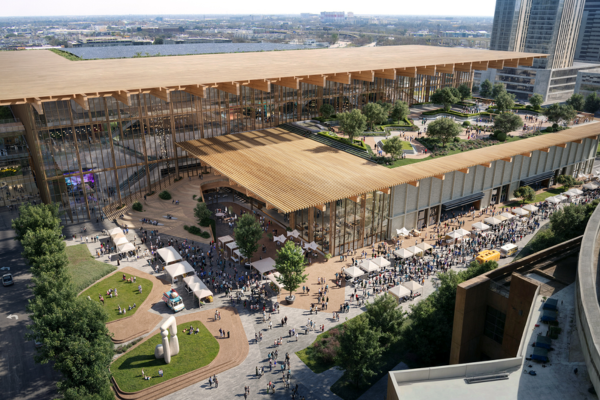Plan Looks to Bolster Arts in Houston's East End
Published Apr 07, 2021 by A.J. Mistretta
A new initiative aims to preserve and propel the arts in one of Houston’s oldest and most culturally rich neighborhoods.
The East End Houston Cultural District and the East End District this week announced the adoption of a Cultural Arts Strategic Plan that will provide a framework for cultivating the cultural landscape of Houston’s East End over the next ten years.
The plan offers a definitive roadmap to help the East End Cultural District curb culturally insensitive development, overcome the gap in funding to Hispanic artists and art organizations and rectify the absence of dedicated and readily available venues for art and artists in the area. As the East End continues to grow, the plan aims to ensure that the community’s vast unique cultural offerings—including ballet folklórico, contemporary dance, bilingual theatrical productions, mariachis and over 120 murals—are protected, celebrated and cultivated.
Houston-based art advisory firm Weingarten Art Group created the plan, which is the result of seven months of research, analysis and community outreach to East End residents, business owners, artists, cultural activists, historians and others. The plan was made possible by a grant from the City of Houston Mayor’s Office of Cultural Affairs.
“Though the East End has a rich cultural history, it has remained an underfunded and underserved community when it comes to the arts,” said Lea Weingarten, Principal of Weingarten Art Group. “That’s why this strategic plan is so important. It is designed to engage and inspire leadership and presents practical steps to achieve arts-focused goals over the next decade and beyond.”
The East End consists of tight-knit communities, a vibrant arts scene and a robust and expanding business district. In 2014, the Greater East End Management District (now East End District) established the East End Houston Cultural District and developed the East End Cultural Designation Plan to create a sense of place in the neighborhood. That plan also designated the Navigation Esplanade as a central hub for art, history and community. Improvements realized by that plan include the launch of the new Chicano Art Space (in a former YWCA Building on Navigation Boulevard); the installation of numerous murals, including “Welcome to the East End Houston” by local artists Donkeeboy and Donkeemom; a host of new festivals; and the addition of several new bars and restaurants into the neighborhood.
Veronica Chapa Gorczynski, Executive Director of the East End Houston Cultural District, said the creation of the Cultural District has allowed art to flourish across the Greater East End over the last seven years. “We are elated to present a community-based plan that builds on that momentum and will help develop the East End’s rich cultural landscape for years to come,” she said.
To develop the plan, Weingarten solicited public feedback by issuing a bilingual survey to hundreds of community members, holding multiple virtual meetings with focus groups and advisory groups and conducting numerous interviews with stakeholders from around the District.
Highlights of the plan include recommendations to:
- Revitalize Talento Bilingue de Houston (TBH) to establish a cultural venue in the East End that can be consistently utilized for outreach, performances and programming, and improve adjacent Guadalupe Plaza with an artist-designed outdoor stage and related essential amenities.
- Establish vibrant public gateways as markers to the District.
- Launch “Calle de Colores,” a mile-long stretch of warehouse buildings on Navigation that provide empty canvases for street art, murals and lend themselves to festival programming.
- Pursue funding and programming support via foundation grants for the District and micro-grants for artists, makers and arts organizations.
- Hire a Cultural Arts Administrator to serve as the executor of the plan and as the main point of contact for artists, makers and partners in the District.
- Advocate for and support cultural development across all sectors of the District, especially in historically under-programmed, easternmost neighborhoods.
- Focus on new, dedicated cultural programming for youth and seniors, including the establishment of an “East End Teen Arts Council” and a senior oral history/storytelling program to preserve cultural memories.
Download an executive summary of the East End Cultural Arts Strategic Plan and learn more about Houston's unique neighborhoods and communities.
 The Houston Report
The Houston Report




















